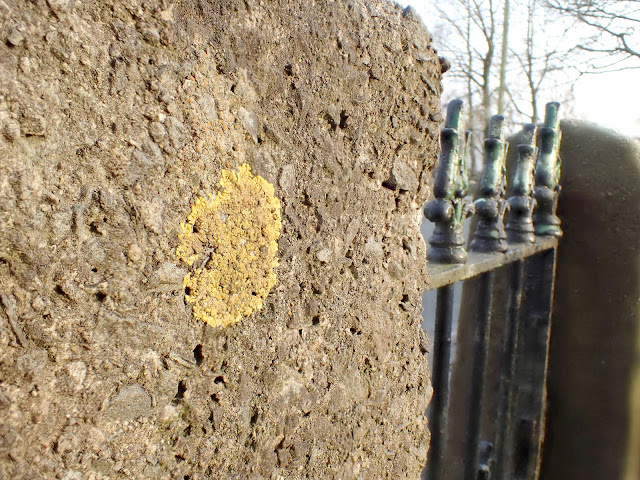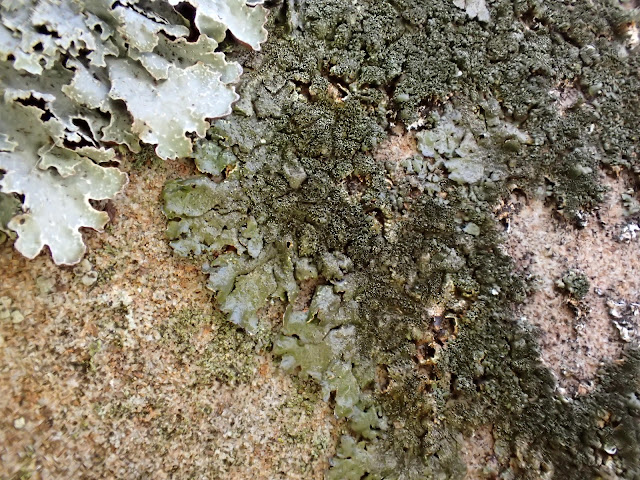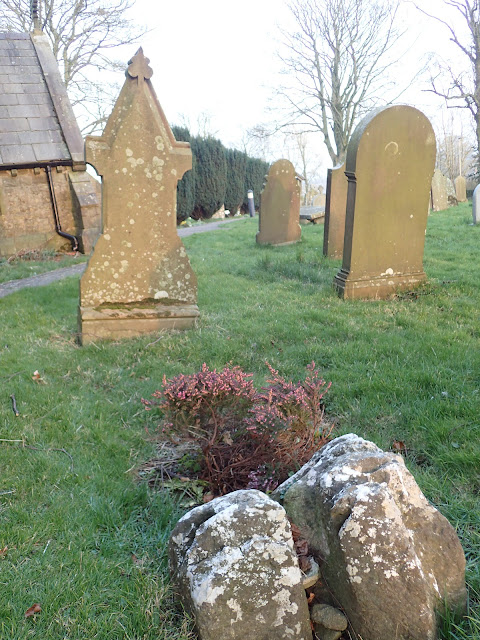 |
Workshops to be held on Wed 11 May 2022 - (See description of some of the lichens in the churchyard lower down):
"Introduction to Lichens of Churchyards for Beginners - Part 1 "-Afternoon session: 2pm- 5pm - This session is now fully booked, though you can ask to be put on the waiting list.
"Introduction to Lichens of Churchyards for Beginners - Part 1 " (repeat) - Evening Session 6pm- 9pm This session still has spare places (as of the 21st April)
Cost: £20 (Concessions available - please ask). both led by Dr Judith Allinson. Includes tea and biscuits. (Date for a part 2 Session will be planned shortly if there is demand.) To book please email
On Tuesday 22 March a group at St Mary's Church Embsay invited me to look at the lichens of the churchyard with them. As a result we are planning these introductory sessions for the public. Do you have an interest in lichens on your churchyard? Would you like to find out more about these fascinating "organisms"? Then one of these sessions are for you.
Where is Embsay?
Embsay church is situated 180m above sea level between two very well manured pastures just below the gritstone cliffs of Embsay Moor. Embsay Moor supplies Embsay Reservoir with water, which in turn supplies much of Craven with water. The boundary of the Yorkshire Dales National Park boundary lies along the road/church wall, with the churchyard inside. It is 2 miles north of Skipton.
What are lichens?
Lichens are completely different to mosses. Mosses are green plants and have tiny leaves. Mosses can photosynthesise.
Lichens are a fascinating group of organisms. Each lichen is made up of a fungus and either an alga or in some cases a cyanobacteria (a blue-green alga). The fungal threads give the lichen structure and collect nutrients. The algae collect sunlight and store energy, and give the energy rich compounds (sugars etc) to the lichen. There are 2000 different species of lichen in the UK. Each lichen has its own species of fungus. There are far fewer species of algae involved, and the same alga can occur in different lichens.
Lichens can grow in stressful places and tolerate long periods of drought and high temperatures and intense sunshine / UV. They can grow on rock surfaces and are/were important in soil formation as the glaciers left the north of England. They have evolved many colourful pigments which protect the lichens against the sun's radiation and against predators - hungry slugs and snails and caterpillars.
We hope you will consider coming on the Introductory sessions when planned. Email for info - We can lend you a handlens
Meanwhile, if you visit the churchyard by yourself here are a few lichens you might notice.
1. Xanthoria parietina
This glorious golden orange lichen has a host of names including
Bird Perch Lichen, Common Yellow Lichen, Maritime Sunburst Lichen.
You can see this at the entrance to the churchyard on the wall at the left, and on some of the branches of the trees and hedge at the carpark
 |
| Xanthoria parietina - Bird Perch Lichen |
This is different to a much neater orange lichen with a pleated edge to the thallus: which grows on lime rich rocks such as limestone and occasionally on mortar: This is on the wall in several places including next to the other churchyard gate further along the road
This is the
2. Golden Beautiful-Plaque Lichen with pleated-edge which grows on Limestone
Caloplaca flavescens
It hasn't got an official English name. So I have just given it the name above. Caloplaca means beautiful patch. Flavescens means "yellowish, turning yellow.". This and the above Xanthoria parietina two are the most common "big yellow patch" lichens by far that you will find in the Yorkshire Dales.
Learn the names of these two and enrichen every walk you go on in the Dales.
 |
| Caloplaca flavescens |
 |
| Map Lichen (Rhizocarpon geographicum) |
 |
| Lecanora campestris |
 |
| Lecanora campestris growing on the flat gravestone in the foreground. |

"Big White Patches on top of Limestone Walls" lichen
 |
| Parmelia saxatilis and Melanelixia fuliginosa |
 |
| Parmelia saxatilis |
 |
| Melanelixia fuliginosa |
 |
| Crab's-Eye Lichen on gritstone capstone - Ochrolechia parella |
 |
| Crab's-Eye Lichen on gritstone capstone - Ochrolechia parella |
 |
| Yes - Xanthoria parietina |
 |
| Sunset |








No comments:
Post a Comment